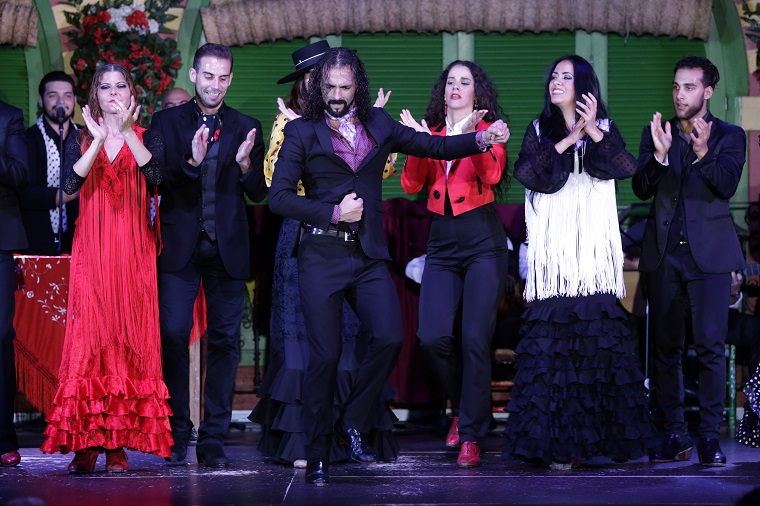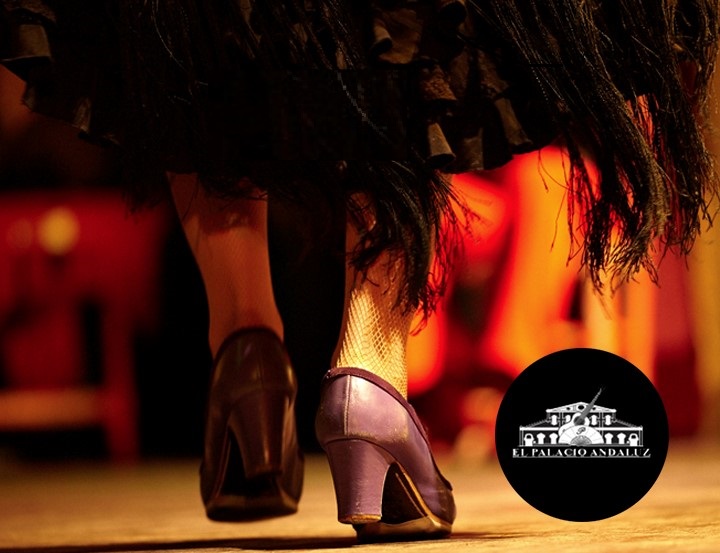
The zapateado of flamenco is an essential element for the dance, making the sound of the taconeo a rhythm more in the interpretation of a flamenco palo.
Flamenco dance includes zapateado as part of the performance of the male flamenco dancer or female flamenco dancer. In fact, if we take a tour of the evolution of this art, we can see how cante first emerged, then the accompaniment with the claps and the guitar was added and, finally, the flamenco dance was incorporated, which initially included only the zapateado for later integrate the movements of the arms and hands, as we know it today.
Let’s say that zapateado of flamenco is the music that the artist does with his feet, a rhythm that we can compare with a percussion instrument, and that has become an essential element in a flamenco performance. In summary, the foot-stomping is the rhythmic combination of sounds that the flamenco dancer makes with the tip and the heel of the feet on the tablao, all a waste of strength and artistic passion.
With time and given the acceptance and success that it had in the public, the zapateado of flamenco was introduced in most flamenco dancing styles. The success of the foot-stomping has been such that, nowadays, it is a technique that is present in all the flamenco shows and even in many Spanish dance performances.
Its evolution has been such that not only is it part of the artist’s interpretation, but its importance in this artistic expression makes the zapateado also a flamenco style, that belongs to the group of polyrhythms, that is, that during its execution it combines several types of rhythms.
If we think about the sound that the heel makes on the tablao, it can remind us to the rhythm of the drums of African music, something that gives clues about the multicultural influences that this art has.
The presence of zapateado in flamenco demonstrates the influence of different musical genres from American countries, such as the Mexican, Colombian, Cuban or even the North American tap dance.
The zapateado from Cádiz was one of the first to emerge and historical references indicate that it was the flamenco dancer Josefa Vargas, one of the pioneers of the current zapateado, a style whose origins go back to the 19th century.
 Everything indicates that the artists of that time adopted the richness of rhythms from the tanguillos to the zapateado, given the variety of accents, syncopes and setbacks that this club possesses and its perfect adaptation to the footing of the bailaores.
Everything indicates that the artists of that time adopted the richness of rhythms from the tanguillos to the zapateado, given the variety of accents, syncopes and setbacks that this club possesses and its perfect adaptation to the footing of the bailaores.
It is a piece that is usually danced with pants, like other sticks, so that the public can see well the feet of the artists during their execution.
In the development of flamenco zapateado has also influenced the improvements of the shoes that are used for dancing, which have incorporated nails in the heel and toe to improve the sound during the performance of the artist.
In a flamenco show, the flamenco dancer who zapatea is a percussionist more, who adds richness to the club he performs, creating the sound with his heel, the sole or the tip of his dance shoe over flamenco tablao.
To enjoy a flamenco zapateado the best thing is to attend a live show. It is a highly recommended experience because in this way you can appreciate the difficulty that sometimes has the interpretation for the flamenco dancer and, in addition, you can hear the sound that produces the heels on the stage.
In the function that is celebrated every day at El Palacio Andaluz, you can see how the artists perform various zapateados during their performances and, in addition, you can enjoy unique moments like the zapateado that Emilio Ramírez ‘El Duende’ plays on a table, as seen in this video.
Therefore, if you intend to visit Seville, take note of our recommendation and go to a live flamenco show so that you can feel the strength and passion of the interpretation of a good zapateado.
If you decide to visit El Palacio Andaluz, we remind you that you can make your reservation online and with this you will ensure you see the function on the day and at the time that best suits your vacation plan. We will wait for you!
© 2024 El Palacio Andaluz. All rights reserved.